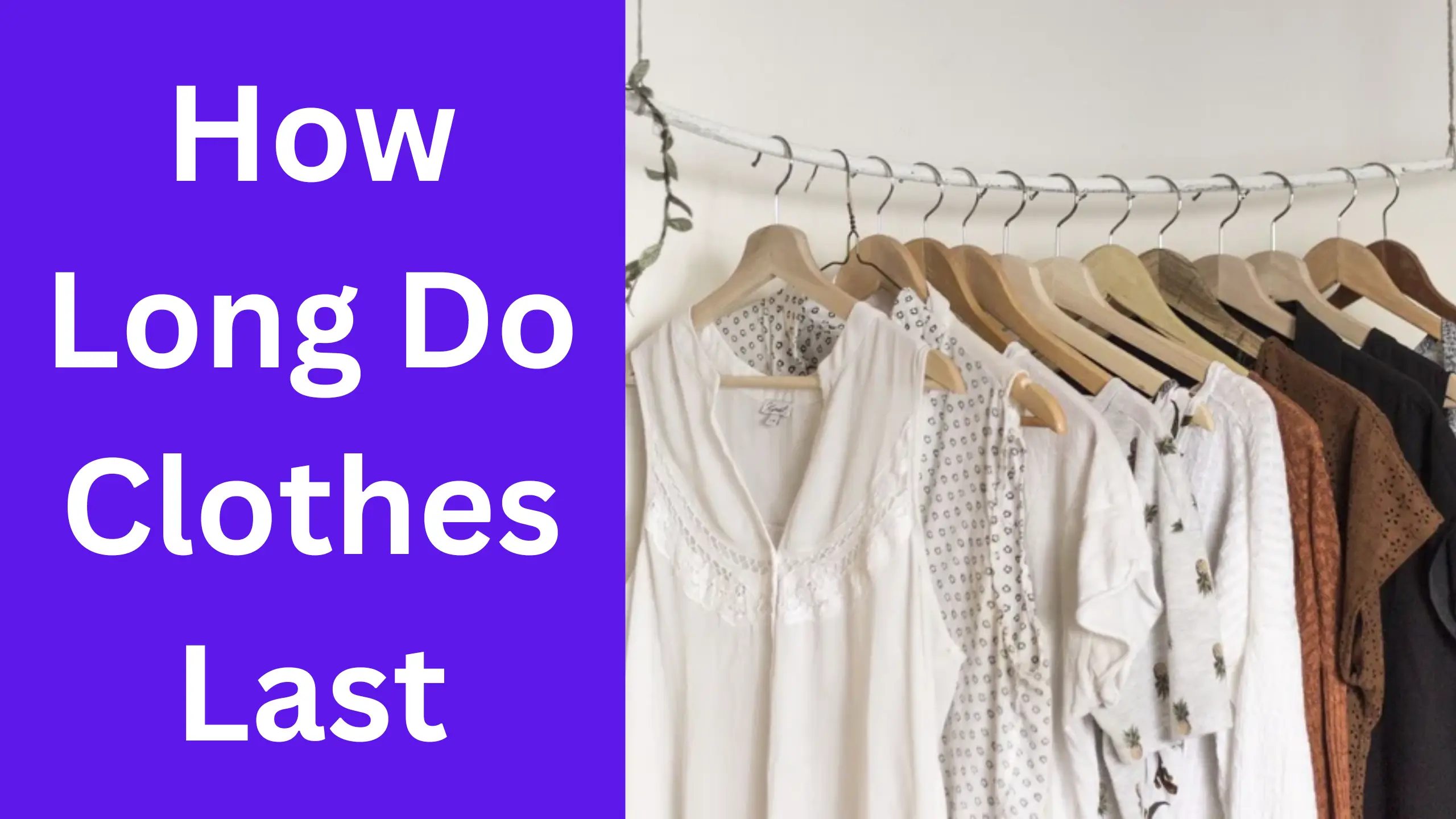As we continue to strive for sustainability in our daily lives. One often overlooked aspect is the lifespan of our clothes. In a world where fast fashion dominates, clothing is often discarded after just a few wears. Understanding how to make our clothes last longer is crucial. In this article, we will explore the various factors that affect the longevity of clothes. Discuss ways to care for and maintain our garments, and explore sustainable practices for prolonging the life of our clothes.
Factors Affecting the Lifespan of Clothes
Several factors influence how long our clothes last. One of the primary factors is the quality of the clothing materials used. Clothes made from higher-quality materials tend to be more durable and have a longer lifespan compared to those made from cheaper, inferior materials. Additionally, the frequency of wear, washing, and exposure to harsh elements. It also plays a role in determining the lifespan of clothes. Clothes that are worn and washed frequently or exposed to harsh weather conditions may wear out more quickly.
Clothing Materials and Their Durability
The materials used in clothing construction greatly impact their durability. Natural fibers like cotton, wool, and silk are generally more durable and long-lasting compared to synthetic materials like polyester or rayon. However, even within the same type of material, the quality can vary. For instance, a high-quality cotton shirt made from premium cotton fibers is likely to last longer than a shirt made from lower-quality cotton. It’s essential to pay attention to the materials used in clothing and opt for higher-quality options to ensure a longer lifespan.
Proper Care and Maintenance for Longer-lasting Clothes
Proper care and maintenance are crucial for prolonging the lifespan of clothes. Here are some tips to help you take care of your garments:
Follow care instructions: Always read and follow the care instructions on the clothing label. Different fabrics require different care, and following these instructions will prevent unnecessary wear and tear.
Wash clothes properly: Use cold water for washing and air drying or line drying. Whenever possible to reduce the wear and tear from heat and mechanical drying.
Handle with care: Avoid rough handling of clothes, especially delicate fabrics. Be careful while washing, drying, and ironing to prevent damage to the fabric or stitching.
Store properly: Store your clothes in a cool, dry, and well-ventilated area to prevent moisture and mold growth. Avoid overcrowding in the closet as it can cause clothes to wrinkle or lose their shape.
By following these care and maintenance tips. You can extend the lifespan of your clothes and reduce the need for frequent replacements.
Signs of Wear and Tear in Clothes
Knowing the signs of wear and tear in clothes is crucial to determine. When it’s time to repair or replace them. Some common signs of wear and tear include:
Fading or discoloration: Clothes that have lost their original color or have become faded may indicate that the fabric is worn out and needs replacement.
Pilling: Pilling refers to the formation of small balls of fuzz on the fabric surface, which can be a sign of fabric abrasion and wear. Regularly remove pills using a fabric shaver or pumice stone to prevent further damage.
Thinning or fraying fabric: Clothes with thinning or fraying fabric, especially in high-stress areas like elbows, knees, and seams, may indicate that the garment is reaching the end of its lifespan.
Stretched out or distorted shape: Clothes that have lost their original shape or have become stretched out may no longer fit properly and may need to be replaced.
Damaged or loose stitching: Clothes with damaged or loose stitching can quickly unravel, leading to further damage and reduced lifespan. Repair or reinforce the stitching promptly to prevent further damage.
Recognizing these signs of wear and tear in clothes can help you determine when it’s time to repair or replace them. Thereby prolonging their lifespan and reducing unnecessary waste.
Extending the Lifespan of Clothes Through Repairs and Alterations
Repairing and altering clothes can be an effective way to extend their lifespan and reduce the need for replacements. Here are some ideas for repairing and altering clothes:
Patching: If your clothes have small holes or tears, consider patching them up using matching fabric or decorative patches. This can not only salvage the garment but also add a unique touch to it.
Hemming: Shortening or lengthening the hem of a garment can give it a fresh look and extend its lifespan. Hemming can be done on pants, skirts, and dresses, and it’s a simple alteration that can make a big difference.
Reinforcing seams: If you notice loose or damaged seams, reinforcing them with additional stitching can prevent further damage and make the garment last longer.
Resizing: If a garment is too big or too small, consider resizing it through alterations like taking in the sides, adding darts, or adjusting the waistband. This can give the garment a better fit and prolong its lifespan.
By being creative and resourceful with repairs and alterations. You can not only extend the lifespan of your clothes but also add your personal touch to them.
Sustainable Practices for Prolonging the Life of Clothes
There are several sustainable practices that you can adopt to prolong the life of your clothes:
Capsule wardrobe: Creating a capsule wardrobe, which consists of a limited number of versatile and high-quality clothing items that can be mixed and matched, can reduce the need for frequent purchases and extend the lifespan of clothes.
Clothing rotation: Rotating your clothes and not wearing the same garments too frequently can reduce wear and tear from constant use and washing.
Stain removal: Promptly treating and removing stains from clothes can prevent them from setting in and causing permanent damage, thus extending the lifespan of the garment.
Clothing swaps or donations: Instead of discarding clothes, consider organizing clothing swaps with friends or donating them to charitable organizations. This way, clothes can find new homes and be used for longer.
Mindful laundering: Avoid over-washing, using harsh chemicals, or washing clothes with items that can cause friction and damage, like zippers or hooks. Use eco-friendly laundry detergents and wash clothes in cold water to reduce energy consumption.
Adopting these sustainable practices can not only extend the lifespan of your clothes. It also reduces your carbon footprint and contributes to a more sustainable fashion industry.
The Role of Fast Fashion in Clothing Lifespan
Fast fashion, characterized by inexpensive and quickly produced clothing, has significantly impacted the lifespan of clothes. The fast fashion industry encourages consumers to constantly buy new clothes and discard them quickly without considering the longevity of the garments. The fast fashion model promotes disposable clothing, which leads to a higher rate of clothing waste and environmental degradation. Here are some ways in which fast fashion affects the lifespan of clothes:
Poor quality materials: Fast fashion brands often use low-quality materials that are prone to wear and tear, leading to shorter lifespans of the garments.
Minimal durability: Fast fashion items are designed to be trendy and quickly discarded, rather than being made to last. This results in clothes that lose their shape, color, and functionality after just a few wears.
Lack of repair options: Fast fashion items are often not designed with repair options in mind, making it difficult or costly to repair them when they get damaged.
Overconsumption: The fast fashion industry promotes a culture of overconsumption, where consumers are constantly encouraged to buy new clothes, leading to a shorter lifespan of the garments.
To counter the negative impact of fast fashion on clothing lifespan. It’s important to shift towards more sustainable and ethical fashion choices. Such as buying from ethical and sustainable brands, choosing high-quality garments, and supporting slow fashion practices.
Conclusion
In conclusion, the lifespan of clothes depends on various factors, including the quality of materials, construction, care, and usage. By recognizing signs of wear and tear, repairing and altering clothes, adopting sustainable practices, and being mindful of the impact of fast fashion. We can extend the lifespan of our clothes and reduce waste in the fashion industry.

